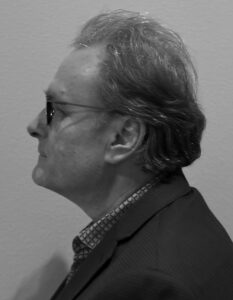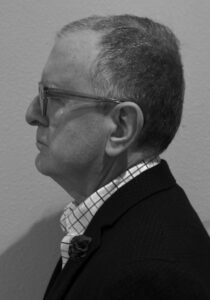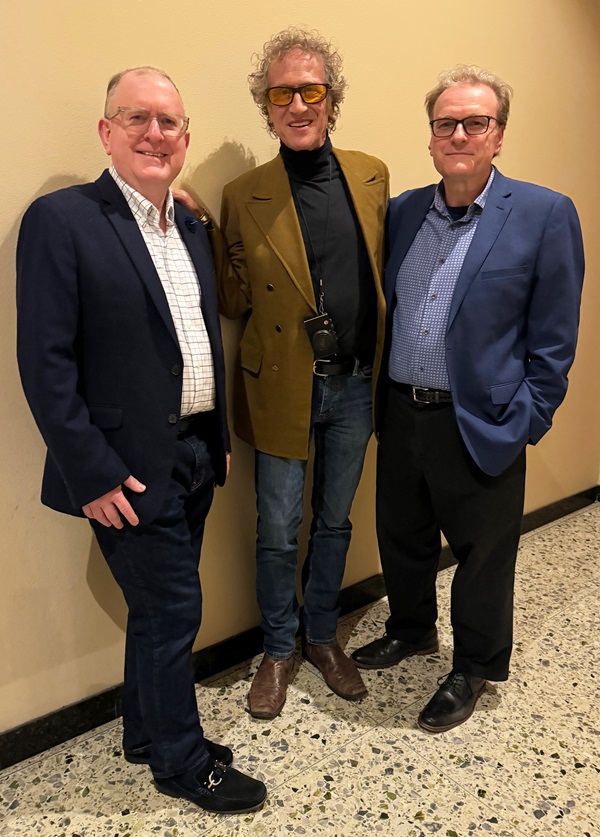Hitchcock Retrospective: A Different Hitchcock Film The First Friday Of Every Month In 2024
By Jimmy Steinfeldt
Historic Camelot Theatre, Palm Springs Cultural Center (The Hollywood Times) 040/05/2024
Jimmy Steinfeldt: What’s the first Hitchcock film you remember seeing?
Richard Edwards: The first one I saw in a theatrical setting was Rear Window. It was a film course at Wesleyan University with Professor Joe Reed. He screened the film. I was 18 years old, and I was mesmerized. I probably would have seen Psycho on television, but it was Rear Window that made me start to pay attention to Hitchcock.
Steven Smith: The first Hitchcock film I remember seeing was Saboteur. It was on television in 1972 and I was eight years old. I came in late but I saw the climactic scene on the Statue of Liberty featuring actor Norman Lloyd. When his sleeve started to unravel, I could barely breathe. I felt inside the movie because it felt like reality to me. I was filled with terror as if I was watching a real person. Later as an adult I remembered from that 1972 viewing that the only thing you hear in the scene are natural sounds like the wind or a tugboat. I learned how Hitchcock used sound and the omission of sound to pull in the audience.

Jimmy Steinfeldt: Steven you mentioned you were only eight years old when you first saw a Hitchcock film and it filled you with terror. How old was Hitchcock when he felt terror after his own father had him put in a jail cell to teach him a lesson?
Steven Smith: It depends on when he told the story! But he was around six or eight years old.
Jimmy Steinfeldt: Tell me about some of the great books written on Hitchcock.
Richard Edwards: The biography I’ve relied on most for Hitchcock details, especially production histories, is Alfred Hitchcock: A Life in Darkness and Light, by Patrick McGilligan. It’s long and comprehensive, about 800 pages. Hitchcock is the most written about filmmaker ever. As a researcher on Hitchcock, I never rely on any one source. It takes a lot of deep dives and reading between the lines to get to an authentic picture of the man. Early in his career he learned how to manage his own story. He could be playful, planting ideas like he does in his published and widely known interviews with Francois Truffaut. That book is one of the better interviews he ever did. You need to take Hitchcock comments with a grain of salt.
Steven Smith: Hitchcock’s stories could depend on who was interviewing him. When Hitchcock was interviewed by Kevin Brownlow, Hitchcock knew that Brownlow had helped to preserve the history of silent film. Therefore, Hitchcock gave a more conversational interview that I think ends up being more trustworthy. Also, the early interviews before he became an icon tend to be more accurate. Another excellent book is The Twelve Lives of Alfred Hitchcock by Edward White.
Jimmy Steinfeldt: How did you come to be involved in this film series?
Steven Smith: Both Richard and I reached out to the Palm Springs Cultural Center as soon as we heard about the series. Hitchcock is the best-known director of the Golden age of cinema. He’s the only one from that era known to many young viewers. He still attracts an audience. His films are timeless and reach people’s emotions.
Jimmy Steinfeldt: What filmmakers have influenced you?
Steven Smith: Hitchcock of course. Reading his biographies there is a certain narrative about him which is that he was an amazingly prepared person. He didn’t storyboard every shot of his movies, but he did storyboard key sequences. He spent months working on the screenplay. As I entered the field of writing for newspapers, producing network television, and making long form documentaries I consciously adopted a course of preparation. I also knew as did Hitchcock that change during a project is inevitable.
Hitchcock was thrifty in the sense that his movies could have cost a lot more. He was both an artist and businessman. Orson Welles was jealous that Hitchcock could thread that needle so successfully. Hitchcock could work well with the studios, and he created a persona for himself that the audiences enjoyed and understood. This was especially true for the television series and the creation of the drawing he did of himself in profile. And that popularity allowed him to experiment as a filmmaker. No studio in 1957, 1958 would have made a movie like Vertigo for any other director.
Richard Edwards: I have my pantheon of filmmakers that I return to over and over. Film Noir is my number one love. My list would include Hitchcock of course. Also, John Huston, Jacques Tourneur, and Orson Welles. However, George Lucas would probably be the most influential going back to my being a Star Wars kid. I was twelve years old when it was released and the first film I saw multiple times when it came out. There was no VHS or Betamax so I had to see it several times in the theatre. That’s the movie that ignited my love of film. Lucas was basically the reason I chose USC for film school.
Then onto Close Encounters of the Third Kind by Spielberg. Then into Martin Scorsese who matters to me greatly. I also went to the University of Chicago during my Junior and Senior year of college. I saw classic and international films very regularly. It was called Doc Films. That’s where I learned about the French New Wave. The great Russian and European directors. It’s also where I first watched Fellini, Antonioni and Truffaut.
A highlight of my time as a teaching assistant at USC was when Patricia Hitchcock came at the end of the course to do a Q&A with the students. Then she would present each of the 350 students with a watch featuring the Alfred Hitchcock likeness. The famous silhouette that he drew and we see on his TV show. She would say “Here’s a watch that honors my father.” She was very generous, and she was proud of her father.
Steven Smith: Hitchcock is a controversial figure, but he did surround himself with women he hired to help him make his films and TV episodes. This was less common back then than it is today. He hired a young secretary Joan Harrison in 1934. He trained her in screenwriting, and she went on to get two Oscar nominations for Foreign Correspondent and Rebecca. He then supported her move to become a producer at Universal. Later when Hitchcock’s agent Lew Wasserman suggested the TV show, Hitchcock chose Harrison to be the show’s producer. Later she would be joined by Norman Lloyd.
Most of his films are about women. They are often the protagonist. He was fascinated by women. Also, Hitchcock believed early on that women chose what movies to go to. He had a side to him that was interested in women. He didn’t have any women in his life outside of family before he married Alma.
Jimmy Steinfeldt: How did you learn your craft?

Richard Edwards: I’m a trained scholar. My PhD is in Critical Studies of Film from USC School of Cinematic Arts. My career moved forward when I got into podcasting early. Way back in 2005 before iTunes could host RSS feeds, I produced a scholarly podcast with my friend and collaborator Shannon Clute entitled “Investigating Film Noir: Out of the Past.” That podcast series, which ran for five years, became the basis of our first book, co-written with Shannon, called The Maltese Touch of Evil: Film Noir and Potential Criticism. I also have published articles in Film Noir Reader series by Alain Silver and James Ursini, including an essay on Hitchcock where I analyze his 1930’s British films as prototypes for Hollywood’s embrace of noir in the 1940s.
Steven Smith: I have a traditional background as a broadcast journalist having studied at USC. Also, thanks to my brother who is an actor, producer and director of the stage and our friend Robert Osborne I was able to go to the Motion Picture Retirement Home. I brought a tape recorder, and we would interview actors from the silent film era or people like Larry Fine of the Three Stooges. I loved sitting at the feet of filmmakers and actors. After USC I wrote for the L.A. Times and I became a producer for the Weekend Today show.
Going back to 1983 while I was in college, I mentioned to my brother there was no book on the great film composer Bernard Herrmann. My brother said, “Why don’t you write it?” It took eight years to get it published but here we are in 2024 and it’s still in print. It was the research source for an Oscar nominated documentary. In 1998 I started producing long-form documentaries for television (A&E, Bravo, Discovery, History Channel.)
Jimmy Steinfeldt: What are some of your proudest accomplishments?
Richard Edwards: I had the good fortune of working with Turner Classic Movies (TCM) and I taught a course on Hitchcock as a fan engagement. TCM showed all his films. I had about 16,000 students. It was great to lead a bunch of fans under the banner of TCM. We did a lot of live viewing events on Twitter. Of course, these films were meant to be seen communally. In the old days people saw films in a movie palace. That’s what they called the great old movie theatres. Before television, people left the security of their home and went to the movies for an experience. The Greeks had their myths and the Americans have their movies.
Then TCM asked me to introduce the restored print of the film The Man Who Knew Too Much. It would be screened at the famous Cinematheque at the Egyptian Theatre in Hollywood. This was a great honor and I was very excited about it. I did a lot of preparation. Then the night before the screening they called me at my hotel room and said “I hate to tell you but we have to bump you. We can’t have you introduce the movie.” I told them I had done a lot of prep and this was the one thing I was looking forward to. Then they said to me “Well we have to bump you because Martin Scorsese wants to introduce the film.” His foundation restored the film so of course I was OK with this. Now I can say I’ve only ever been bumped once and that was by Martin Scorsese.

Steven Smith: I am proud of the letter I got from Steven Spielberg praising a documentary I did. Also, a letter I got from John Williams. Perhaps I’m most happy when someone tells me they read something I wrote about Hitchcock that they’ve never heard about before. This is especially gratifying when I hear it from a young person. I’m very excited about this film series at the Palm Springs Cultural Center because it gives people of all ages the opportunity to see these classic Hitchcock films on the big screen as they were meant to be seen.
Hitchcock is the gateway drug to classic films: Suspense, Noir, etc. Hitchcock was ingenious at how to subvert the Production Code and was part of the slow erosion of the code. Hitchcock was a man full of fear. Luckily for us he was able to put that fear into his films. He was able to share that with his audience.
Jimmy Steinfeldt: Horror, Mystery, Suspense, Noir. What are the similarities and what are the differences between these genres?
Steven Smith: The Venn Diagram for me is Psycho. Hitchcock always took umbrage when someone called his films mysteries. In his films the audience often knows things that some of the characters in the film, like James Stewart in Vertigo, don’t know. We are in suspense and in fear for their safety. This is why Hitchcock is known as the Master of Suspense.
Richard Edwards: Hitchcock would not consider himself a Noir filmmaker. He made Shadow of a Doubt which has Noir elements. Genres exist so audiences can decide what type of movie they want to see. Genres help the poster artist decide what kind of imagery to draw. Is the movie going to be a creepy experience, a sad experience, or a suspenseful experience. Genre is just a market differentiator. A director has two choices once the genre is chosen. They can conform to it and just make it the very best film in that genre or they can diverge from it, like was done in Psycho. And hopefully this isn’t a spoiler alert, but Psycho does pivot after the Janet Leigh character is killed early in the film.
Generally, genre allows the director to understand key story points, audience expectations and imagery. Here are some examples: Gangster films. We all know one when we see it, that’s a very obvious genre. Every TV show that parodies Noir has a man with a hat who’s smoking and there is jazz saxophone music in the background. However, there are very few filmmakers who transcend genre and one of them is Hitchcock. He became an adjective. This is hard to accomplish. A film can be Hitchcockian! On the Mt. Rushmore of great filmmakers one of the four heads has to be Hitchcock.
Jimmy Steinfeldt: Best way for our readers to contact you?
Steven Smith: mediasteven.com
Richard Edwards: noircast.net





